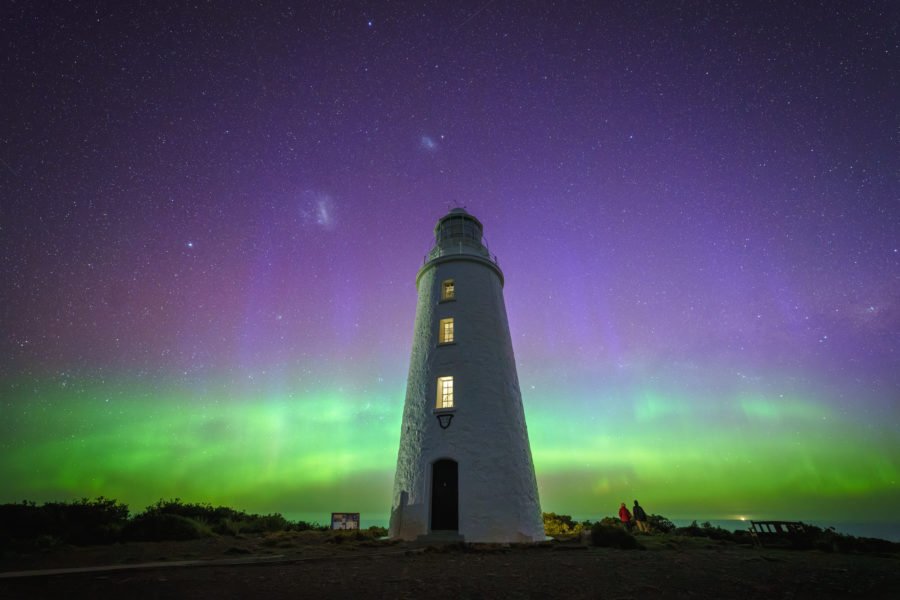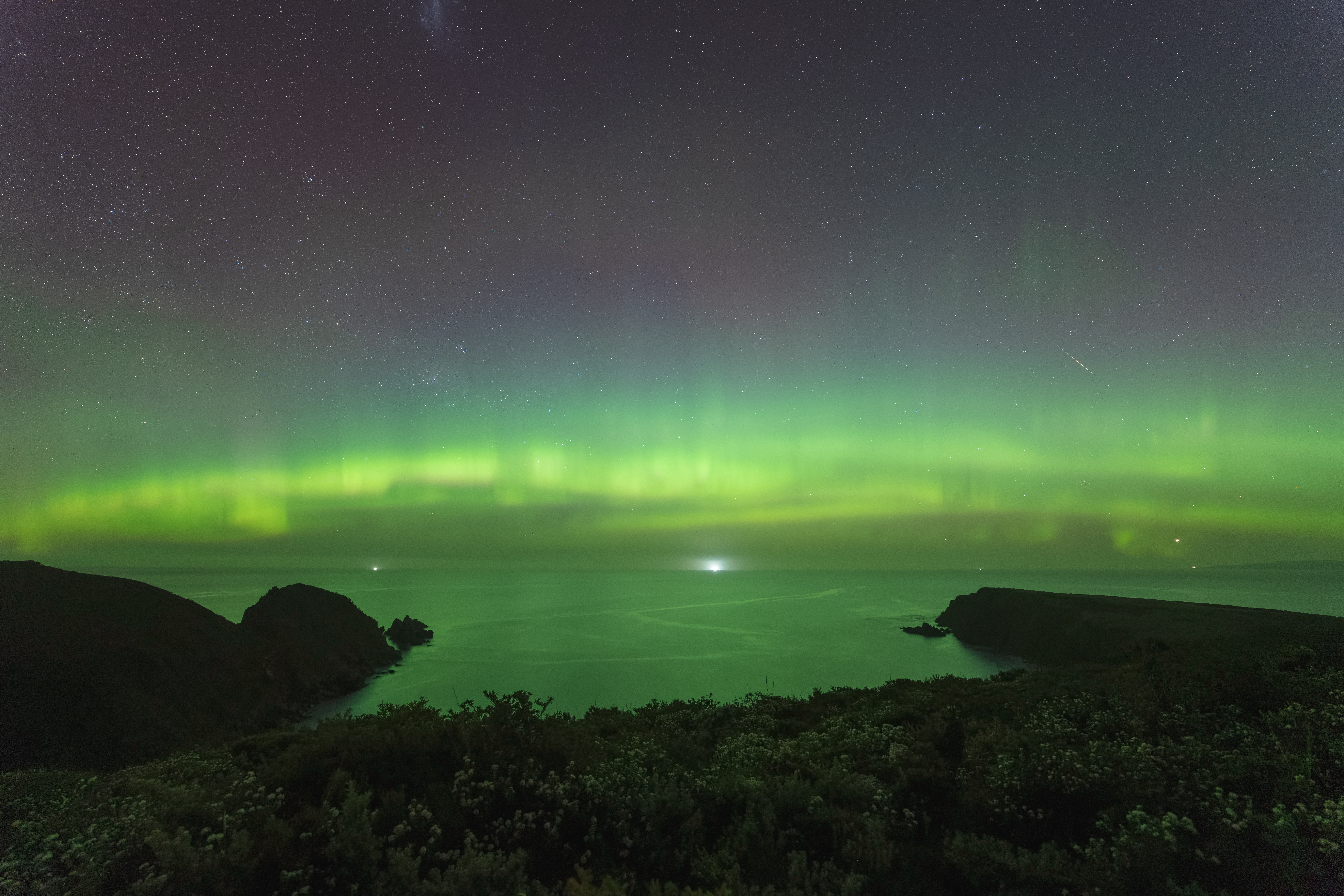How to perfectly capture the shimmer and shine of the Southern Lights

On Thursday, 4 November, southern Australia was treated to an incredible spectacle, a stunning display of aurora australis thanks to a G3 geomagnetic storm*. The aurora was so strong that it was visible through twilight meaning that intrepid aurora chasers didn’t even have to wait until the skies were completely dark. The conditions to witness the aurora were perfect, there was very little cloud cover, clear skies with very little air pollution, and it was a new moon. This provided very dark clear skies allowing the light show to be witnessed without obstruction.
Of course, you can have ideal viewing conditions but be in a location that will make the aurora hard to observe. Being as far south geographically as you can with a clear view of the horizon will set you up for success. A location with low light pollution will also help, although for a big show like this one the aurora was easily visible in the inner Hobart suburbs.
Fortunately I was on Bruny Island running a photographic workshop and had sufficient notice to get into position by sunset. I chose to photograph from the Cape Bruny Lighthouse, which I consider to be the southernmost highly accessible location to photograph the southern lights in Australia. Standing under the 183-year-old lighthouse at the top of the hill, the view south from the Cape is unobstructed to Antarctica.
The exciting show kicked-off through the twilight and gradually grew in energy, bursting into a sequence of curtains and beams from 9.30pm. Later in the evening the aurora was seen to pulse with green bursts of colour above the auroral arc, a relatively unusual occurrence. Generally the aurora works up over a period of time to a peak before it gradually subsides, however this event was beyond spectacular for most of the night and into the early hours of the morning. It was an event that aurora chasers will be talking about for years to come.

How to capture the aurora
- Have the right equipment: You’ll need a sturdy tripod to keep the camera still, a camera that is good at taking photos in low light, and a lens that has a wide aperture to let a lot of light into the sensor. Newer mobile phones are capable of capturing the aurora so don’t be afraid to give that a try. A warm jacket and a hot drink are also not a bad idea.
- You’ll need to find a location that has little light pollution, that faces south and has a relatively clear view of the horizon. Also make sure it’s safe to be there at night.
- Check apps or Facebook groups for reports of auroral activity, nothing beats a confirmed sighting to let you know that it’s time to shoot. Check out the app SpaceWeatherLive or the Facebook Group ‘Aurora Australis Tasmania’ for aurora information.
- Set the camera to manual mode, the lens to the lowest f-number (widest aperture), ISO to between 1600-6400, and the shutter speed from 5-15 seconds.
- Your lens will need to be in manual focus as most cameras can’t focus in the dark. Manually focus on a star using the focus magnification function of the camera to get it as sharp as possible.
- Take some test shots and adjust the shutter speed or ISO to get the best exposure. Magnify the captured image and check that it is sharp. If not, keep adjusting it until it is.
- You can set your camera to continuously take images using an intervalometer so you can turn your images into a time lapse. This also lets you step away from your camera and enjoy the show!

*What is a geomagnetic storm?
Such storms are disturbances in Earth’s magnetic field that can result in many hours of vibrant auroras at the northern and southern reaches of the planet.
These storms often occur when a coronal mass ejection (CME) or a persistent, high-speed solar wind stream sweeps past Earth, causing the magnetic field to become unsettled. If the unsettled conditions persist long enough, a geomagnetic storm is possible.


